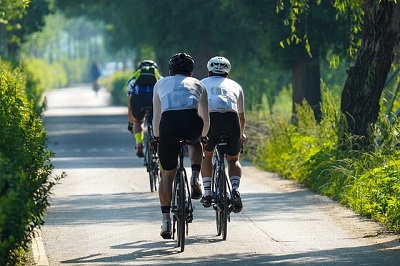Prostatitis and Exercise: Why Moving is Vital
Everyone knows that exercise is beneficial for health, mainly because it allows various organs of the body to get exercised and "maintained." Prostatitis is a common disease in men. Can patients with prostatitis exercise?

Here are some exercise methods suitable for patients with prostatitis:
1. Pelvic Floor Muscle Exercise
Pelvic floor muscle exercises are an important method for patients with prostatitis. These exercises can strengthen the strength and flexibility of the pelvic floor muscles and improve the symptoms of prostatitis.
Here are the steps for pelvic floor muscle exercises:
Finding the Pelvic Floor Muscles: Try to interrupt the flow of urine to feel the contraction; this is the pelvic floor muscle. Alternatively, try inserting a finger into the anus and feel the contraction around the anus.
Contract and Relax Timely: Contract the pelvic floor muscles for 3-5 seconds, then slowly relax. Repeat this 10 times per set, doing 3-4 sets each day.
Gradual Increase: Start with contracting for 3-5 seconds and gradually increase to about 10 seconds. You can also increase the number of daily sets according to your personal condition, gradually increasing the intensity of the exercise.
2. Aerobic Exercise
Aerobic exercise can improve cardiovascular function and enhance the body's immunity, having a positive effect on alleviating the symptoms of prostatitis.
Here are some suitable aerobic exercises:
Brisk Walking or Jogging: Maintain 30 minutes of brisk walking or jogging each day to enhance metabolism and blood circulation, and improve immunity.
Swimming: Swimming is a whole-body aerobic exercise that can exercise all muscles, promote blood circulation, and improve the symptoms of prostatitis.
Jumping Rope: Jumping rope can effectively exercise the pelvic floor muscles and the prostate gland, promoting blood circulation in the prostate and improving its function, helping to reduce inflammation.
3. Relaxation Techniques
Relaxation is an important method to alleviate the symptoms of prostatitis. It can help reduce pain and improve urinary function.
Relaxation techniques include:
Deep Breathing: Sit or lie down and breathe deeply, focusing your attention on the breathing to relieve bodily tension and anxiety.
Warm Therapy: Use a hot water bottle to apply heat to the abdomen or perineal area to relieve muscle tension and pain.
Relaxation Training: Learn relaxation techniques and adjust body-mind balance through courses like yoga, Tai Chi, and meditation.
4. Other Precautions
In addition to exercise, patients with prostatitis should also pay attention to the following:
Avoid spicy, stimulating foods, caffeine, and alcohol.
Increase intake of high-fiber foods, fruits, and vegetables, and maintain a regular diet.
Avoid sitting for long periods, as this can exacerbate symptoms of prostatitis; it's important to get up and move around periodically.
Overexertion can lead to a decrease in immunity, making it easier to trigger prostatitis flare-ups; therefore, it's essential to arrange work and rest times reasonably.
The above are detailed introductions to exercise methods for prostatitis, and it is hoped they will be helpful. For those suffering from prostatitis, it's advisable to persist in taking traditional Chinese medicine like Diuretic and Anti-inflammatory Pill for treatment, combined with these exercise methods to help improve symptoms. Patients can hope to recover their health sooner!
Warm Reminder
The sensitive nature of the prostate means it can be affected by temperature changes, potentially exacerbating existing conditions. The excitability of the prostate's sympathetic nerves can become sensitive in cold temperatures, causing the prostate gland to contract, leading to chronic congestion and increased accumulation of prostate fluid, triggering prostatitis episodes.
It's important to note that excessive exercise can cause congestion and swelling of the prostate, which is not beneficial for its maintenance. Therefore, exercise should be tailored to your own physical strength and capability, ideally controlled to about 20-30 minutes per day.
Recommended Readings:
Swimming: Benefits of an Active Lifestyle for Men with Prostatitis
Is Yellowish and Smelly Urine Mean Prostatitis?
Masturbation-Induced Prostatitis: Can Abstinence Lead to Recovery?



